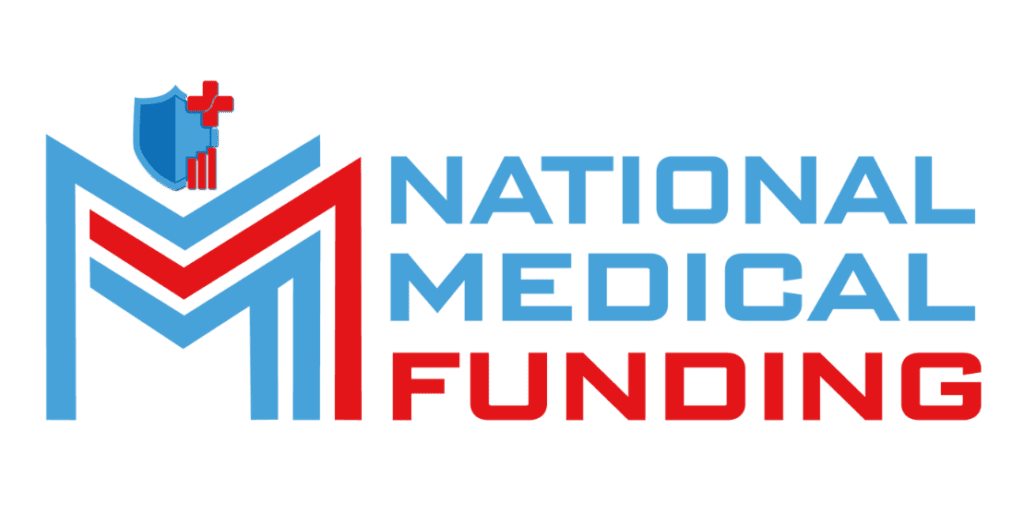
Feasibility First: How Smart Healthcare Loans
The Startup Dream Meets Financial Reality Startin...

Saturday and Sunday – CLOSED
support@nationalmedicalfunding.com



A medical practice comes with a lot of responsibility. Beyond patient care, you also need to manage salary, rent, utilities, equipment and technology. These financial demands make it important to detect safe medical financing that can provide stability and development opportunities. With many healthcare financing companies offering solutions, it is easy to use the right money for your needs today.
This guide will make you run through everything about small business loans for medical practice – why they matter, how you can apply, what the lenders want, and how to use them strategically. By the end, you will have a clear roadmap to strengthen your practice with confidence.
Running a healthcare business is contrary to running any other company. The cost is high, the rules are strict, and cash flows are often upset due to insurance reimbursement and seasonal patient versions. This is why medical practices bends on debt for financial flexibility.
A well-structured debt does not only keep lights-it also creates opportunity. You can keep more staff, expand your clinic, or invest in modern clinical devices. Instead of delaying significant upgrades, funding allows you to move forward today and pay back over time.
Key reasons practices seek loans include:
If you ever feel overwhelmed while researching a loan, you are not alone. Banks, credit unions and private lenders all provide all medical funding, but the conditions vary widely. This is the place where healthcare financing companies come.
These companies specially specialize in designing financial products for medical professionals. They understand that a clinic needs to be different from a retail store or restaurant. This means that you will often find more flexible words, competitive interest rates and quick approval.

Loans can fund almost every aspect of your practice. The flexibility is one that makes them an important tool for development. Whether you are starting an existing clinic with scratches or scaling, the right loan may make a difference.
Typical loan uses include:
Here’s a simple breakdown:
Expense Type | Example Use Case | Covered by Loan? |
Startup Costs | Lease, license, insurance | ✅ Yes |
Medical Equipment | Diagnostic or surgical tools | ✅ Yes |
Staff & Operations | Salaries, training, benefits | ✅ Yes |
Expansion Projects | New facility or renovations | ✅ Yes |
Marketing & Branding | Website, digital ads, patient outreach | ✅ Yes |

When you choose secure medical financing, you get money created around the unique needs of healthcare practices. Unlike normal debt, medical loan may come with prolonged repayment conditions, low interest rates and flexible structures.
This matters because medical practices often delay insurance payment. Safe financing ensures that you do not need to cut the corners in patient care while waiting for reimbursement.
Benefits include:
Medical practices have access to different loan types. Each comes with pros and cons, depending on your financial goals and current stage of business.
Loan Type | Best For | Advantages | Challenges |
SBA Loans | Long-term growth, expansion | Lower rates, government-backed | Long approval process |
Conventional Bank Loans | Established practices with strong credit | Higher amounts, structured terms | Strict credit requirements |
Alternative Lending | Practices needing quick access to funds | Fast approvals, less paperwork | Higher interest rates |
Equipment Financing | Buying or leasing medical equipment | Equipment serves as collateral | Limited to equipment use |
Business Line of Credit | Ongoing expenses, payroll, emergencies | Flexible access to funds | May come with variable rates |

Before approving loans, lenders look at a variety of financial indicators. Being prepared helps you secure better terms.
The 5 Cs of Credit are the foundation of most loan decisions:
Factor | What It Means for You |
Character | Your credit history and reliability |
Capacity | Your ability to repay based on revenue |
Capital | How much money you’ve invested in your practice |
Collateral | Assets you can pledge to secure the loan |
Conditions | Overall economic and industry conditions |
For a full breakdown, explore our blog on the 5 Cs of credit.

The loan process doesn’t have to be intimidating if you know the steps. Here’s a streamlined roadmap:
Even strong practices sometimes face obstacles in acquiring loans. Common obstacles include low credit scores, insufficient collateral, or unstable revenue currents.
But solutions exist. Special lenders now provide medical financing solutions designed to support practices even with these challenges. The creation of a strong financial story and showing continuous development plans also improves approval opportunities.
Challenge | Solution |
Low Credit Score | Work with specialized medical financing firms |
Lack of Collateral | Explore unsecured loans or equipment financing |
Limited Revenue History | Provide business plans and growth forecasts |
High Debt Load | Consolidate debt before applying |
The loan should be part of your overall development strategy, not just a short -term fix. Think of financing as a way to advance your practice with purpose.
For example, use funding to diversify services, upgrade the patient’s experience or adopt digital health devices. By aligning debt usage with development goals, you ensure that every dollar contributes to future success.

Progressing may seem complex to secure, but with the support of preparations and healthcare financing companies, it becomes a powerful tool. By choosing safe medical financing, you not only get money, but also believe in the financial future of your practice.
Whether you are launching a startup or expanding an established clinic, debt development, stability and better patient care can fuel. With careful plan, your practice may thrive for the coming years.
The Startup Dream Meets Financial Reality Startin...
Why Financial Partnerships Matter in Healthcare I...

Fuel your medical practice’s growth with financial solutions tailored to your needs. We’re here to support independent practitioners and group practices with strategies built for success.
Mon Fri: 8:00am – 6:00pm
Saturday: Closed
Sunday: Closed
Copyright © 2025 National Medical Funding